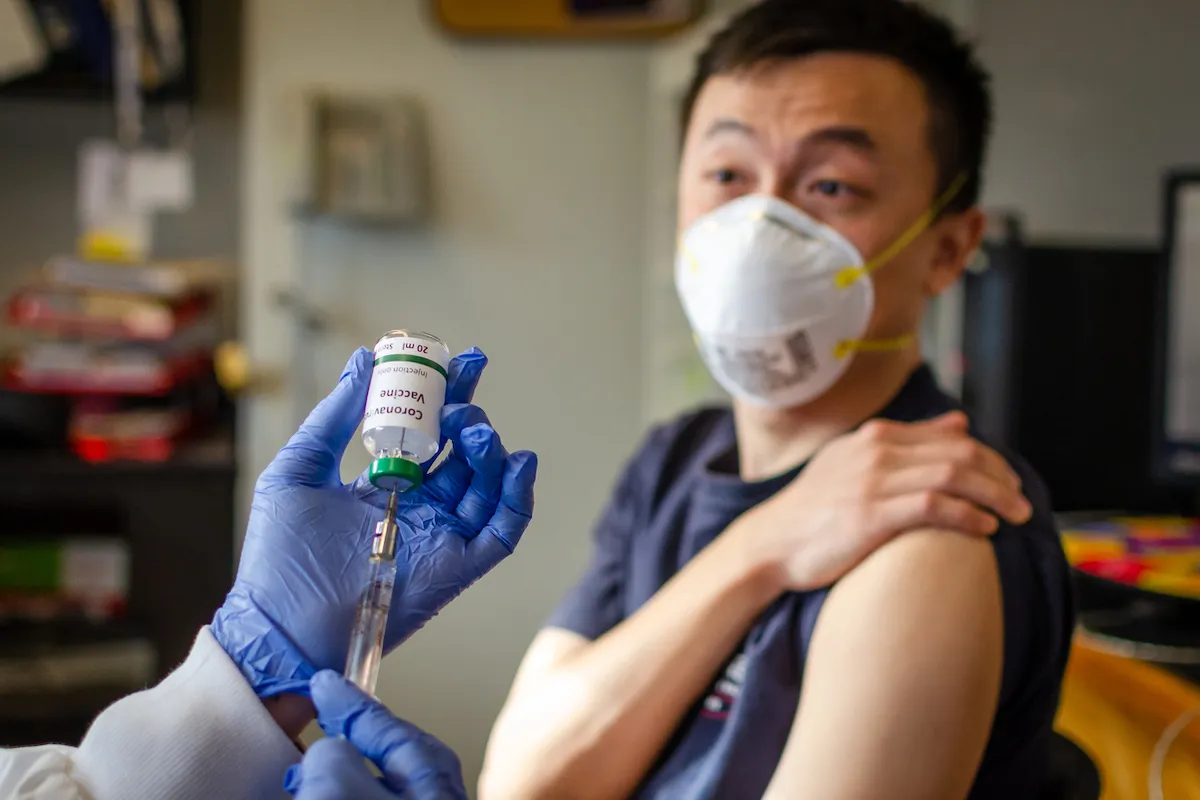An April 30 study from the CDC found a large percentage of the reactions among the 7.98 million people who received the Johnson & Johnson vaccine, as of Apr. 21, had one major commonality. According to the agency’s review of safety monitoring data, 97 percent of post-vaccine side effects were “nonserious”—a finding that’s consistent with the results of the Johnson & Johnson clinical trials before the vaccine received emergency use authorization from the FDA in February. The CDC collected its data from both its Vaccine Adverse Events Reporting System (VAERS), where healthcare providers, pharmaceutical companies, and the public can report adverse vaccine reactions, and V-safe, a text-based tool from the CDC where the public voluntarily tracks their vaccine side effects. In total, VAERS obtained 13,725 adverse event reports for the Johnson & Johnson vaccine, and 97 percent were found to be nonserious. According to the V-safe survey, 61 percent of Johnson & Johnson recipients had a reaction at the injection site, while 76 percent reported a systemic reaction, meaning side effects elsewhere in the body. And for more vaccine news, check out Pfizer Caused This Reaction in Half of Recipients, New Study Says. The remaining three percent of vaccine recipients, 343 people, reported “serious” side effects, the CDC explains. In total, 17 of those were thrombosis with thrombocytopenia syndrome (TTS), including 14 blood clots of the brain called cerebral venous sinus thrombosis (CVST). In looking at the full 13,725 events reported via VAERS, that’s a 0.1 percent rate of blood clots. These adverse reactions have primarily been in women under 50, though some have been slightly older and recently, there was a case involving a man. Most occurred within two weeks of receiving the Johnson & Johnson vaccine. While health officials don’t discount the seriousness of these cases, they say the vaccine is largely safe and the benefits greatly outweigh the risks of a rare potentially fatal reaction. When the Johnson & Johnson vaccine pause was lifted, FDA Commissioner Janet Woodcock, MD, said in a statement: “We have concluded that the known and potential benefits of the Janssen COVID-19 vaccine outweigh its known and potential risks in individuals 18 years of age and older.” Sandra Fryhofer, MD, the American Medical Association’s (AMA) liaison to the CDC’s Advisory Committee on Immunization Practices (ACIP), recently spoke about the “rare but serious” risk of blood clots from the Johnson & Johnson vaccine. “Patients who’ve had the Janssen vaccine should seek immediate medical attention if they develop shortness of breath, chest pain, leg swelling, persistent abdominal pain, neurological symptoms including severe or persistent headache or blurred vision, or petechiae beyond the site of vaccination,” Fryhofer said during a Apr. 26 video update on the AMA website. And for more health news delivered straight to your inbox, sign up for our daily newsletter. According to data collected by VAERS, two side effects were more commonly reported among Johnson & Johnson vaccine recipients than any others: 34 percent experienced a headache and 34 percent also had a fever. Among the 338,765 people who reported their side effects via V-Safe, a headache was also very common, with 52 percent of people reporting the reaction. However, two more reactions were even more frequently reported: fatigue (59 percent) and pain at the injection site (58 perfect).ae0fcc31ae342fd3a1346ebb1f342fcb In the same AMA video, Fryhofer said flu-like symptoms—“a mild to moderate headache, fatigue, fever, muscle aches”—should be expected after any COVID vaccination. She noted the mild to moderate side effects “usually resolve within one to two days.” And for more on vaccine reactions, This Vaccine Side Effect Could Mean You Already Had COVID, New Study Says. Another CDC study, also published on Apr. 30, revealed that reports of syncope, more commonly known as fainting, were more likely after the Johnson & Johnson vaccine when compared to the flu vaccine. But the anxiety-induced reaction is still very rare. Seventeen fainting events took place after the Johnson & Johnson shot was administered across five mass vaccination sites, which the CDC says is a rate of 8.2 incidents per 100,000 vaccinated people. According to the research, younger people were more likely to faint. “As use of COVID-19 vaccines expands into younger age groups, providers should be aware that younger persons might be more highly predisposed to anxiety-related events after vaccination than are older persons,” the study explains. And for more vaccine news, The CDC Says People Who Get COVID After Vaccination Have This in Common.



